
views
Watching for Possible Signs

Watch for reports of "earthquake lights." Days, or mere seconds, before an earthquake, people have observed strange lights from the ground or hovering in the air. Though they are not fully understood, earthquake lights may be emitted from rocks that are under extreme stress. Earthquake lights have not been reported before all earthquakes, nor has the timing been consistent, but if you hear about strange lights or talk of UFO in your area, you may want to go over your earthquake preparedness plan and make sure your emergency survival kit is stocked. Earthquake lights have been observed as short, blue flames coming up from the ground, as orbs of light that float in the air, or as huge forks of light that look like lightening shooting up from the ground.

Observe unusual changes in animal behavior. There are reports of animals, from toads to bees to birds and bears, abandoning their homes or breeding grounds just before an earthquake. It is not understood why animals may sense an oncoming event, possibly because of changes in the electric field or responding to the P-wave, but noticing strange behavior in your pet may give you a heads up that something is about to happen. Chickens may stop laying eggs before an earthquake. If you notice your hens stop laying eggs for no reason, make sure you and your family know what to do in case of an earthquake. Catfish respond violently to changes in electric fields, which may occur before an earthquake. If you are fishing and see a ton of catfish suddenly thrashing around, it is possible an earthquake is on the way. Look around for a safe place away from trees or bridges that might fall on you. Dogs, cats, and other animals can feel an earthquake seconds before it can be detected by humans. If your pet begins acting nervous and erratic, becomes frightened of seemingly nothing and runs to hide, or if your normally calm dog begins to bite and bark, you may want to look around for a place to take cover.Dogs will also howl a lot and loud if there is an earthquake.

Notice possible foreshocks (smaller earthquakes that lead up to the "main" earthquake). Though foreshocks may not always occur before an earthquake, and it is impossible to tell which earthquake is the main quake until after the fact, earthquakes tend to happen in clusters. If you experience one or more small earthquakes, there may be another, bigger earthquake on the way. Because it is impossible to predict how long an earthquake will last or its magnitude, when you feel the ground begin to roll, take the appropriate actions to protect yourself from falling debris, depending on where you are (indoors, outdoors, in your car).
Finding Legitimate Sources of Information

Investigate the seismic cycle of any faults in your area. Though there is no way to pinpoint the exact arrival of an earthquake, scientists can examine sediment samples to get an idea of when major earthquakes occurred in the past. By measuring the amount of time between events, they can come up with a rough idea of when a major quake might hit. Cycles can stretch for hundreds of years--it may be 600 years (or more or less) between major earthquakes along a fault--but there's no way to truly know if or when the next big quake will occur. If the nearest fault line still has 250+ years in its cycle before another big earthquake, allow that to give you some solace. But do remember that there are no hard and fast rules for predicting earthquakes, so you should have an emergency kit prepared just in case.
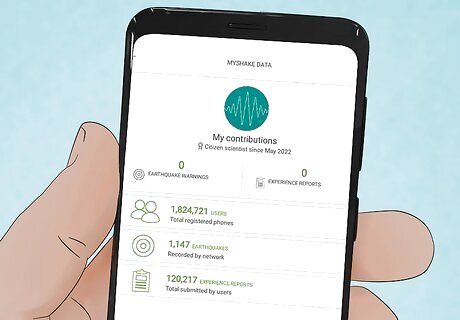
Participate in an earthquake early warning program. Right now Japan, Mexico, and California are the only areas that provide official earthquake early warnings, though research is being conducted to expand these systems to include places near fault lines. Even with systems in place, they can only provide tens of seconds of advance warning before an earthquake. There are, however, services that will send you text messages alerting you of natural disaster occurrences or warnings in your area, including earthquakes. These alert messages can provide you with instructions in an emergency, including evacuation routes and available emergency shelters. Your city may have a warning system in place, such a sirens followed by a warning or instructions. Make sure you know if your town or city has such a warning system.One misconception about warning systems is that they predict earthquakes. Currently, earthquake early warning systems only warn about earthquakes in progress and when tremors are imminent. They do not predict earthquakes, and they do not serve as a replacement for earthquake preparedness.
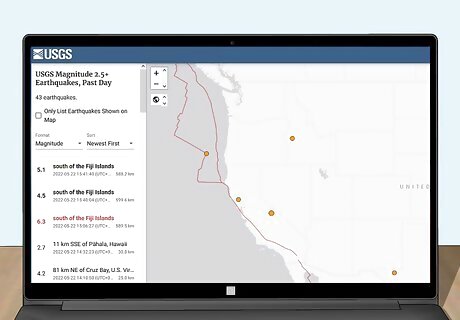
Check an earthquake tracking website. Not sure if that rumbling you felt was a big truck outside, or construction, or even just a weird dream? You can verify earthquakes online with tracking websites such as USGS and apps such as myShake, which will show you where and when any earthquakes were recorded and the magnitude of each quake.
Being Prepared
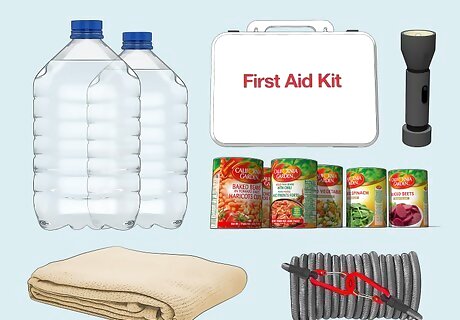
Assemble a survival kit for your home and car. If there is an earthquake, you may lose power and cell service, access to clean water, food, and medication. Putting together a survival kit will ensure your family has their basic needs covered should anything happen. For your home, try to have enough supplies for up to 2 weeks. This means 1 gallon of water per person for each day, non-perishable foods (and a can opener if they are in cans), medications for each day, bottles and diapers for babies, and hygiene products. Vehicle survival kits should include maps, jumper cables, enough water for at least 3 days (1 gallon per person per day), non-perishable foods, blankets, flashlights. Don't forget your pets! Make sure you have water, food, bowls, medication, a leash and collar or carrier for your furry friends. Check out a more extensive list of items on the Red Cross website or [Ready.gov].

Secure large, heavy, or tall furniture by bolting it to the wall. One of the biggest dangers of an earthquake is unstable buildings and the things inside the buildings that can fall and crush you. Anchoring heavy furniture to the wall will make your home much safer if there is an earthquake. Bookshelves, wardrobes, armoires, hutches, and china cabinets are all examples of furniture that should be bolted to the wall. Mirrors and flat screen TVs should also be secured to the wall so that they can't fall off and shatter. Don't hang them over couches or beds.
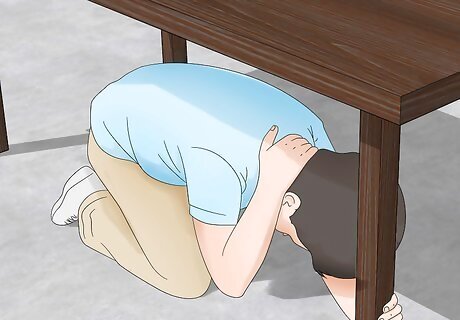
Practice "drop, cover, and hold on." Contrary to popular belief, a door frame is not the safest place to be in an earthquake. You want to drop to your knees so the quake doesn't knock you over. Cover the back of your head and neck with your arms. Or, if you can safely crawl under a solid table or desk, do so and then hold on to one of the legs so you move along with it. You may only have a few seconds to act, and practicing will allow you to react faster. If there is no cover, try to get to an inside corner of the room and get low to the ground. If you are outdoors, try to get to an open area away from buildings, live wires, and other things that might fall on you, and drop, cover, and hold on. If you are in a city, it may be safer to go inside and find cover. If you are in a vehicle, get out from under any bridges or overpasses. Stay in the car and come to a stop as soon as possible, avoiding buildings, trees, or wires that might fall on your car.
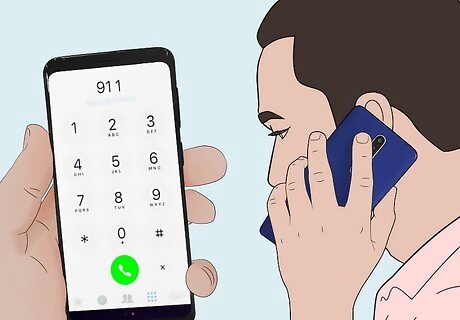
Make sure your family has a communication plan. Agree upon where you will meet if there is an emergency. Learn important phone numbers (like your parents work and cell phone numbers). Choose a person who lives in another town or state as a contact. It is sometimes easier to reach someone who is not in the disaster area. If you are separated from your family, this person can relay your location and that you are safe.











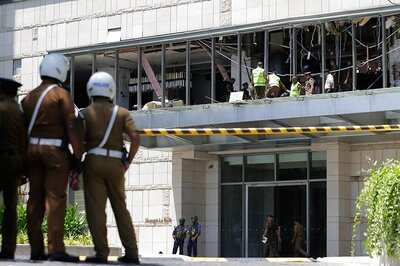






Comments
0 comment